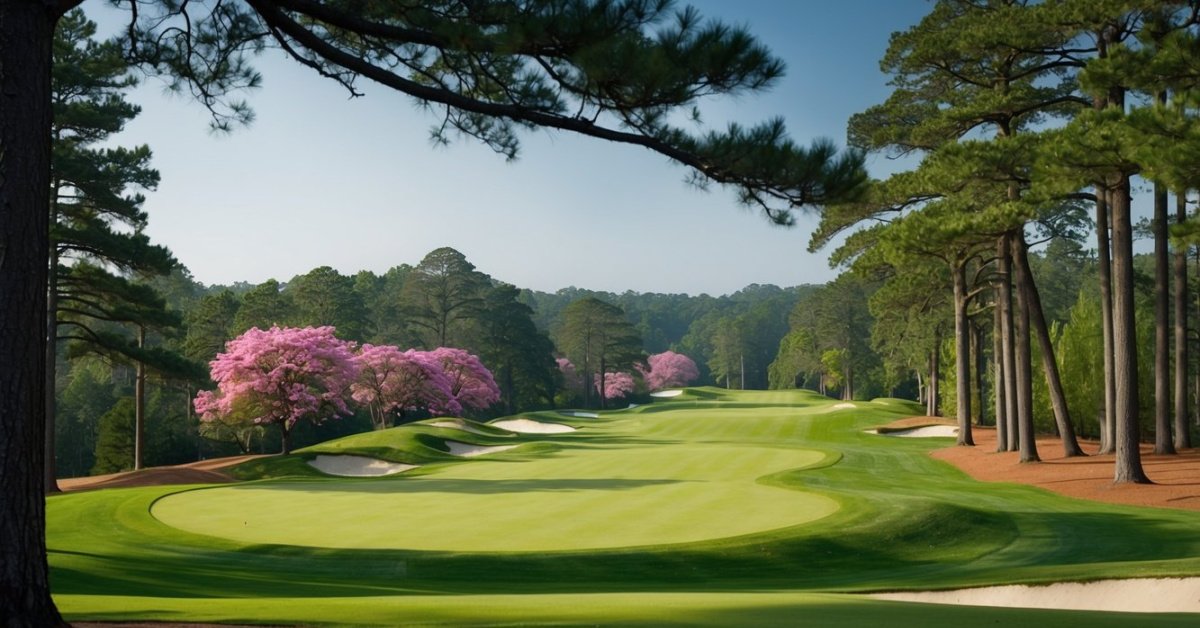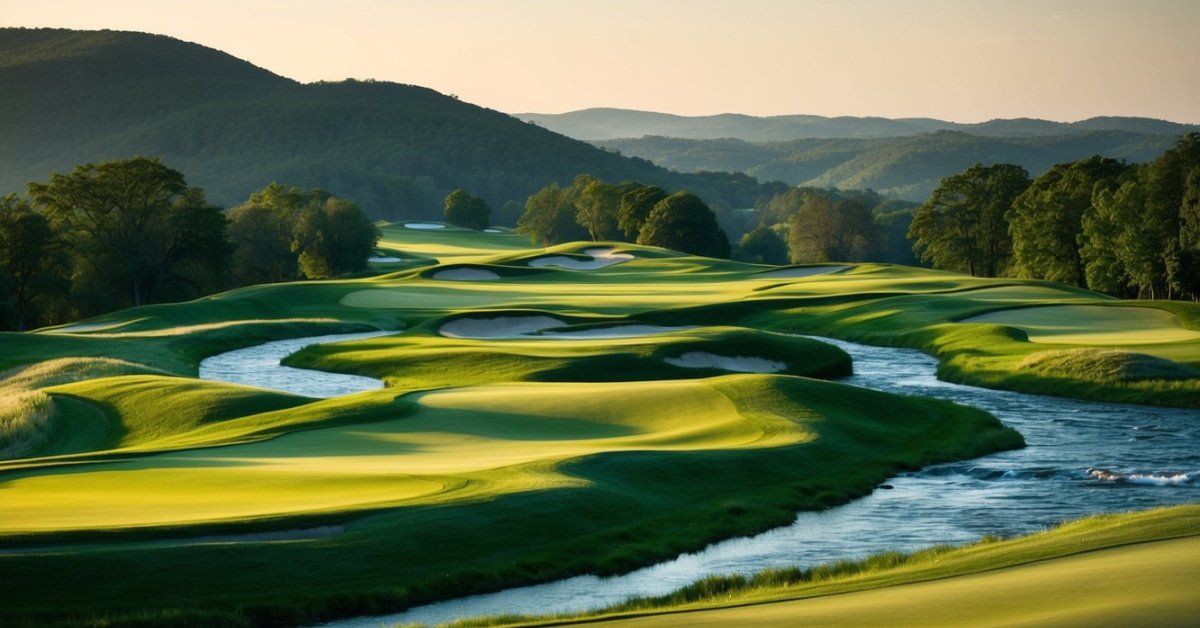Picture this: you’re standing on a tree-lined fairway, sunlight filtering through the dense canopy as you prepare your next shot. Forest courses are undeniably beautiful, but they come with their own set of challenges. Narrow fairways and towering trees demand precision, strategy, and the right equipment to navigate successfully.

If you’ve ever found your ball ricocheting off branches or struggling to keep it low under the canopy, you’re not alone. Playing on forest courses requires a different approach, and low-trajectory balls might just be the game-changer you need. These specialized golf balls are designed to help you keep your shots controlled and avoid the frustration of getting stuck in the trees.
Whether you’re a seasoned golfer or just starting to tackle wooded fairways, understanding how low-trajectory balls work can make all the difference. Let’s explore how they can elevate your game and keep you on course.
Understanding Forest Courses
Forest courses test your ability to strategize and control every shot. These courses often feature narrow, tree-lined fairways that punish missed drives with dense foliage and limited recovery options. The emphasis isn’t on raw power but on precision and keeping the ball in play.
Shot shaping becomes vital when playing through heavily wooded fairways. You frequently need fades, draws, and even punches to navigate around obstacles and maintain position. Trees often overhang, creating low-ceiling conditions where high-lofted shots risk clipping branches. Success depends on controlling ball flight and choosing the right trajectory for the situation.
Wind conditions can add complexity on forest courses. Tree clusters may shield you from stronger gusts but can cause swirling winds instead. Predicting these patterns while maintaining accuracy challenges your decision-making, making club selection even more important.
Adapting to the contours of forest course fairways is equally critical. Many holes feature tight doglegs and uneven ground. Planning shot placement to account for these elements simplifies your approach and lowers your risk of trouble. Maximizing control, not distance, becomes your primary focus.
Importance Of Low-Trajectory Balls
Low-trajectory balls are game-changers when navigating forest courses. These balls help you keep shots below the tree canopy and maintain control in tight spaces, allowing for precision even in tricky conditions.
How They Benefit Your Game
Reducing height. Low-trajectory balls keep your shots beneath overhanging branches, minimizing the risk of clipping trees. This is particularly useful on punch shots or when shaping draws or fades around obstacles.
« Master Parkland Courses: Best Versatile Golf Balls for Every Terrain Challenge
Best Golf Balls for Wet Conditions: Top Picks to Boost Your Game in the Rain »
Improving accuracy. By reducing lift, these balls limit side spin, keeping your shots straighter and reducing errors from gusts in tree clusters. Staying in the fairway becomes easier when mishits curve less.
Enhancing playability. These balls provide enough roll-out on landing, crucial for navigating firm or uneven fairway contours often found on wooded courses. You’ll find yourself in better positions for your next shot.
Performance in Tree-Lined Fairways
Added control. Low-trajectory balls excel on densely lined fairways, where strategic ball flight control is essential. Their flight pattern minimizes excessive rise, helping keep shots on target.
Adaptability. These balls perform well under swirling winds caused by tree clusters. Lower ball flights avoid gust turbulence, giving you more consistent yardages and improving your approach game.
Strategic advantages. Forest courses often demand creative recovery shots. Low-trajectory balls make it easier to execute chip-outs, punch shots, and controlled stingers, helping you recover without compromising distance.
Features To Look For In Low-Trajectory Balls
Selecting low-trajectory balls improves your control on tree-lined fairways. These balls are essential when precise shot placement trumps power.
Design and Materials
A ball with a dense core and soft outer layer enhances performance on forest courses. Dense cores generate a penetrating ball flight, reducing lift and maximizing control under the tree canopy. Softer covers increase grip on club grooves, delivering precise short-game control, which is crucial when navigating dense woods. Look for urethane for durability and spin control, or ionomer if you need added distance on tight fairways.
Durability and Spin Control
Durability ensures your ball stays intact even after contact with cart paths or tree trunks. A multi-layer design reduces scuffing, prolonging the ball’s usability. Spin control increases shot versatility and helps avoid excessive side spin, minimizing hooks or slices when you’re shaping shots around trees. Balls engineered for mid-to-low spin offer better control in swirling forest winds, keeping your shots on target without sacrificing distance.
Top Low-Trajectory Balls For Forest Courses
Low-trajectory balls can transform your game on forest courses by helping you maintain control and precision under the tree canopy. Choosing the right ball can impact shot placement, spin, and overall playability on tight, challenging fairways.
Popular Brands and Models
- Titleist Pro V1x Left Dash
Designed for low spin and a piercing trajectory, this ball delivers remarkable control in windy conditions common on forest courses. Its firm feel adds distance off the tee while maintaining spin control for approach shots.
- Bridgestone Tour B X
Ideal for ball strikers, it offers a consistent, penetrating flight with minimal side spin. The durable urethane cover ensures longevity while maintaining excellent greenside control.
- TaylorMade TP5x
Featuring a 5-layer construction, it combines low spin off the driver with precise control around the green. A fast core and advanced dimple pattern enhance its performance in swirling winds.
- Srixon Z-Star XV
Known for its dense, dual-core design, this ball offers a mid-launch for drivers but stays low on irons and wedges, aligning perfectly with tree-lined courses’ needs. The spin and feel are optimized for any recovery shot.
- Callaway Chrome Soft X LS
Aimed at players seeking lower spin and higher ball speed, it ensures a controllable low flight on tight fairways. Its soft feel and aerodynamic design provide added roll-out and stability.
Pros and Cons of Each Option
- Titleist Pro V1x Left Dash
Pros: Reliable low flight, excellent wind control, and durable construction.
Cons: Firmer feel might not appeal to those preferring softer balls. - Bridgestone Tour B X
Pros: Superior precision, high durability, and great for ball strikers.
Cons: Less forgiving on mishits compared to softer models. - TaylorMade TP5x
Pros: Incredible greenside spin, multi-layer versatility, and wind stability.
Cons: Slightly lower distance compared to other models off the tee. - Srixon Z-Star XV
Pros: Balanced trajectory, high control, and durable cover.
Cons: Mid-launch might not suit all swing speeds. - Callaway Chrome Soft X LS
Pros: High ball speed, long roll-out, and soft feel.
Cons: May lack spin for players needing more greenside control.
Selecting the right low-trajectory ball depends on your swing style and course conditions. Test a few models to see which enhances your game under the trees.
Tips For Playing On Tree-Lined Fairways
Navigating tree-lined fairways requires precision and calculated shot execution. Your approach must blend strategy with the right equipment to conquer the challenges posed by narrow fairways and obstructive trees.
Shot Strategies
Shape shots effectively to adapt to the environment. Use fades or draws to position your ball on the fairway, especially when doglegs or overhanging branches limit straight lines of play. For example, a controlled fade helps when trees crowd the left side of a fairway. Punch shots come in handy if you’re in trouble beneath branches; keep the ball low and ensure clean contact.
Club selection matters when playing under these conditions. Opt for shorter irons or hybrids if you need accuracy over raw distance. When facing windy conditions through tree clusters, keep your ball flight low with a lower-lofted club. The right combination of shot shape and club can help you safely navigate tight fairway corridors.
Avoiding Common Mistakes
Overestimating distance and loft on approach shots leads to trouble. High-arcing shots often catch branches, so focus on a controlled trajectory. Familiarize yourself with low-trajectory balls; for instance, balls like the Bridgestone Tour B X reduce unexpected lift and increase accuracy.
Rushing recovery shots backfires in forested areas. Always survey the obstacles and choose a safe route rather than attempting a heroic escape. If you’re in rough terrain or stuck behind trees, prioritize returning the ball to the fairway over directly advancing to the green. Misjudging angles or velocity in these situations often compounds errors.
Conclusion
Mastering forest courses is all about precision, strategy, and the right tools. Low-trajectory golf balls can give you a significant edge, helping you navigate tight fairways and tricky tree-lined challenges with greater control and confidence.
By pairing these specialized balls with smart shot planning and a focus on accuracy, you’ll find yourself better equipped to handle the unique demands of wooded courses. Embrace the challenge, refine your approach, and watch your game thrive among the trees.










